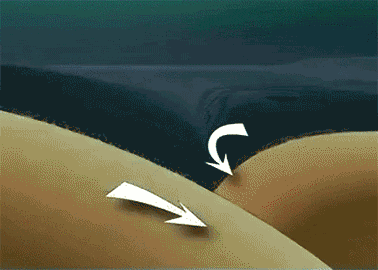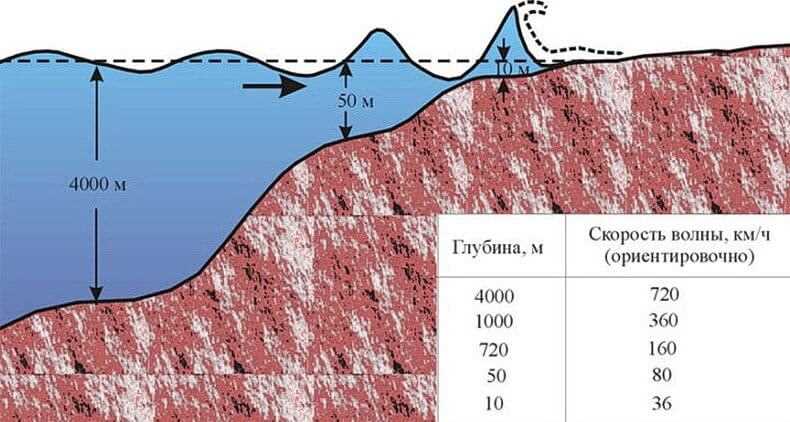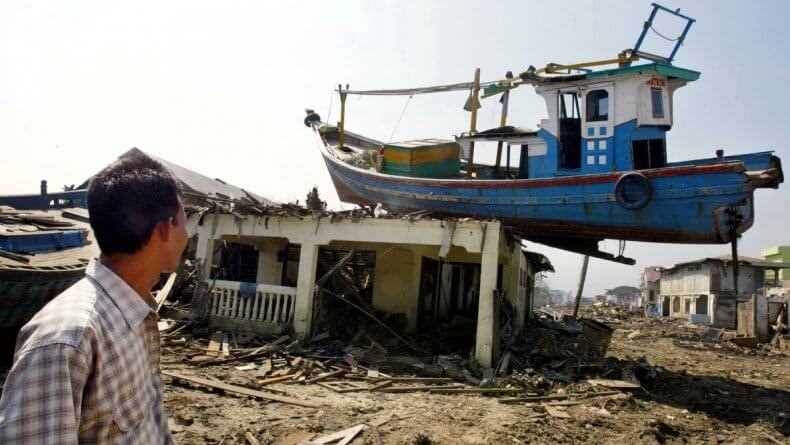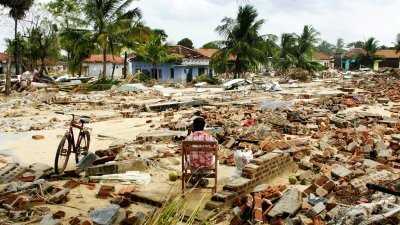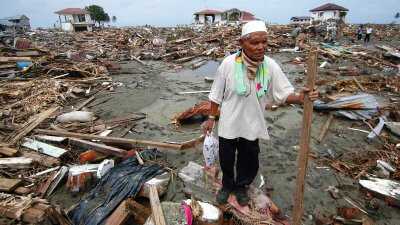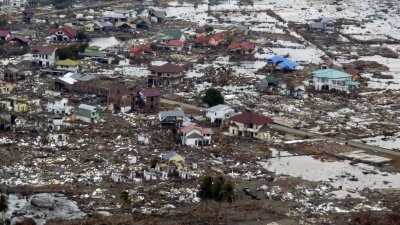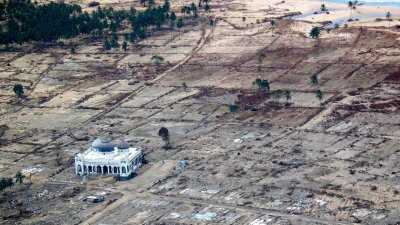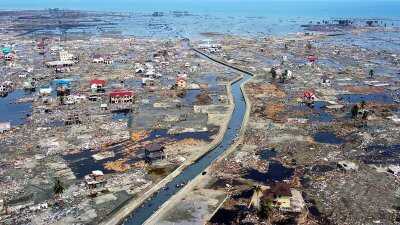When traveling, you should know not only the beauty and sights of the chosen place, but also the possible dangers that may be waiting for you there. For example, what do you know about tsunami in Thailand?
There’s no safer country in Southeast Asia for crime than Thailand. But in terms of the danger of natural conditions it is in the lead. There you can find both malarial mosquitoes and poisonous snakes. But all these dangers pale before what lurks in the depths of the oceans – the Pacific and Indian, whose waters bathe the shores of the country. Tsunami in Thailand is considered one of the most likely natural disasters. They are rare, but even once is enough to make you shudder at the mention of them for the rest of your life. The feature film “The Impossible” about the tsunami in Thailand made a lasting impression on even the most thick-skinned. The reality was even scarier.
The origin of the tsunami
Tsunamis are waves generated by underwater earthquakes, volcanic eruptions or large explosions. They disperse at great speed in concentric circles from the site of the natural cataclysm, virtually invisible in open waters and great depths. However, when approaching shallow water, these waves begin to slow down and grow, propped up by the mass of water of opportunity. Their height can reach several tens of meters. The mountain of water crashes onto the shore and washes away everything in its path.
Are there tsunamis in Thailand?
All of the islands east and south of the country’s coast – Japan, the Philippines, Sumatra, Java, Kalimantan, New Guinea and the Solomon Islands – are the western branch of the so-called Pacific Ring of Fire. These are volcanic faults with constant seismic activity, the root cause of tsunamis.
There are several conditions necessary for their formation. A place for acceleration and a sharp decrease in the depths are obligatory. They arise in places of so-called wave focusing – narrow bays in the axis of motion of the front, or in the presence of islands of different sizes, which provoke wave resonance and become sources of secondary oscillations.
In Thailand, such conditions are more consistent with the west coast of the Malacca Peninsula (Andaman Sea). Therefore, tsunamis in Phuket are most likely. The Gulf of Thailand is wide and shallow over a large area, which makes the seismic wave damping.
Why is a tsunami more dangerous than a storm?
Tens of meters high storm waves are not uncommon on ocean shores. And they are just as capable of causing significant damage, but only in a limited area. Unlike tsunamis, the front of which can reach hundreds or thousands of kilometers – the further away from the epicenter, the greater.
They also differ in terms of energy intensity. A storm wave is generated by the wind, which captures only the surface layers. Therefore, the mass of water raised is less than that pushed in front of it by the tsunami coming from the bottom. In addition, the speed of propagation of the waves also differs. Storm waves do not travel more than 100 km/hr, but seismic shocks propel them up to 1000 km/hr. Therefore, tsunamis have hundreds of times more kinetic energy, which turns into potential energy when slowing down in shallow water and in front of obstacles.
With more energy, seismic waves can penetrate much farther inland, and only objects of similar mass – mountains, hills – can extinguish them. Everything else is swept away like garbage off a table.
Hurricanes and storms can be seen from space and are easily warned about. A tsunami, on the other hand, is like a ripple, almost invisible. That’s why its impact is almost always unexpected.
How to save yourself from a tsunami
In most cases, a tsunami is generated by an earthquake whose epicenter is below the ocean floor. Its magnitude is more than seven on the Richter scale. It is well felt. If you are in the danger zone, you should do the following:
- Feeling an underground tremor, don’t wait for a warning. Gather your belongings, documents, do not lose your companions from sight.
- Try to get as far away from the coast as possible, and if it is impossible, then find a high place, preferably of natural origin – a hill, rock, mountain, and climb it.
- If you are not oriented on the ground, follow the placards indicating escape routes.
- An unusually high tide – several hundred meters or even kilometers – is a major sign that a seismic wave is approaching.
- The first tsunami wave is not the most powerful. Much more dangerous is the second and third. So do not leave a safe place until the water recedes completely. It usually takes up to 10 hours.
Tsunami in Thailand 2004
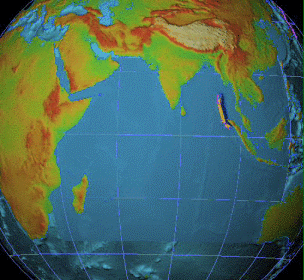
Tsunami in Thailand 2004 was the result of a vertical seismic shift of subcontinental plates in the area of the so-called Java Trench, which is the west coast of the island of Sumatra. The wave front moved in a wide arc from Banda Aceh to Jakarta towards the island of Sri Lanka. Consequences of cataclysm became death about 300 thousand people in 14 countries (the tsunami has reached India and Madagascar) on coast of Indian Ocean. The largest number of dead tourists in Thailand was in the island of Phuket, which was hit by the wave reflected from the northwestern tip of the island of Sumatra near the town of Banda Aceh (it was wiped off the face of the Earth completely).
Causes of the 2004 Thailand tsunami mass deaths
In the 2004 tsunami in Thailand, 8,500 people died. The main reason for the tragedy was that the island authorities did not assess the tsunami hazard in Phuket and did not take any measures, even with obvious signs of impending disaster.
The main reason for the tragedy was that the island authorities did not assess the tsunami hazard in Phuket and did not take any measures, even with obvious signs of impending disaster.
- The time lag between the subjectively felt tremors and the arrival of the wave was two hours – from eight to ten in the morning. No warning or evacuation of people was undertaken.
- Nobody knew anything. Even the natives went to collect fish and other marine life after the water left the shore for several hundred meters. Tourists took selfies until the last moment. These were the first deaths in Thailand’s tsunami.
The aftermath of the 2004 tsunami
Movie Impossible about the tsunami in Thailand
The movie “Impossible” about the tsunami in Thailand was made after eight years. The plot is based on the misadventures of a young family caught in the middle of events. The drama by the director turned out to be convincing. However, we consider the artistic value of the film to be higher than its practical value. It cannot teach you anything. The cause of mass death of people was not revealed in the film, and the authorities are to blame only. Having received a warning from the seismic data analysis center, they did not take any measures to evacuate the population, though there was enough time for that. Perhaps they hoped for the “hit-or-miss” and were afraid to escalate the situation in the country.
The film Impossible, filmed in Thailand, leaves a sense of hopelessness and human powerlessness before the wrath of Nature. After watching it, you may get the impression that it is better to sit at home. No attention is paid to the story lines that tell what could have been prevented tragedy, and how to act properly in such situations.
Action taken after tragedy
The Thai authorities, though belatedly, have taken steps to prevent such tragedies from happening again. They have installed buoys in the Andaman Sea to register high-speed water currents. All resorts and towns along the coast have a tsunami warning system, and evacuation schemes and procedures have been developed by the authorities to ensure it. There are signs everywhere in English and Thai to help orient people.
Where’s the safest
If you’re afraid of a tsunami, that’s no reason to stay home. You can go to Thailand and choose resorts on the Gulf of Thailand. Not only are mainland Pattaya and Hua Hin quite safe, but also the islands Samui, Pangan, Ko Tao and Ko Chang. They are located so that seismic waves will be extinguished many kilometers before them. The likelihood of a tsunami in Pattaya is minimal, but even there you should not let your guard down.
But even on the most dangerous coasts of the Andaman Sea – in the provinces of Phangnga, Krabi and Phuket Island, you can feel safe if you know what to do: don’t panic, don’t yawn and climb as high as possible.
Read More:- Weather, beaches, prices in Phuket in summer – June, July, August.
- Thailand's main dangers for vacationers.
- Are there sharks in Thailand and how can you avoid being attacked by them?.
- The weather, beaches, prices in Phuket in spring – in March, April, May.
- How to Avoid Jellyfish Bites in Thailand.
- Russian Mafia in Thailand. Should we be afraid of it?.

